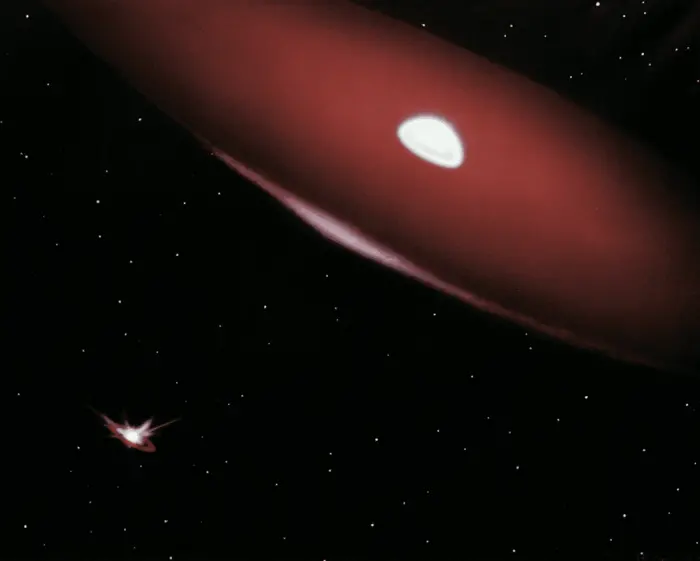Material drifts as dream,
grand paths etched
into the void
charting distance,
hunger,
light.
Twin hearts
beat as one,
burning dead
and bright
across the stage
of time.
One pulse surges,
its partner
prey,
stripped bare
by gravity’s maw.
The core of the consumed
casting off its skin
in silent rage
to shimmer
in the stellar tide –
fading in the dark
for all it gave
in vain.

This poem is inspired by recent research, which has detected the faint light of stellar corpses beside predator stars.
Cannibalised stars result from the close encounters within binary star systems, where one star strips material from its companion. As they grow and expand, these predatory stars may engulf their neighbours, absorbing their mass and leaving behind mere cores. This interaction causes the dominant star to spin rapidly, often giving rise to B-emission line stars, or ‘Be stars,’ which are characterised by their fast rotation and the distinctive gas discs they eject.
In this study, researchers used the powerful telescopes at Georgia State’s Center for High Angular Resolution Astronomy (CHARA) Array to unveil these elusive companions, previously hidden in the glare of their brighter Be stars. By detecting the faint glow of nine stripped companions among 37 Be stars, the study confirmed the theory of mass transfer leading to rapid stellar rotation. This significant finding provides a deeper understanding of stellar evolution and the dynamics of star systems, marking a pivotal step in astronomy. It not only validates the existence of these cannibalised stars but also opens new possibilities for future research in the southern skies and ultraviolet spectrum with tools like the Very Large Telescope Interferometer and the Hubble Space Telescope.
Discover more from The Poetry of Science
Subscribe to get the latest posts sent to your email.
Evocative and beautiful!
Thank you Douglas 🙂